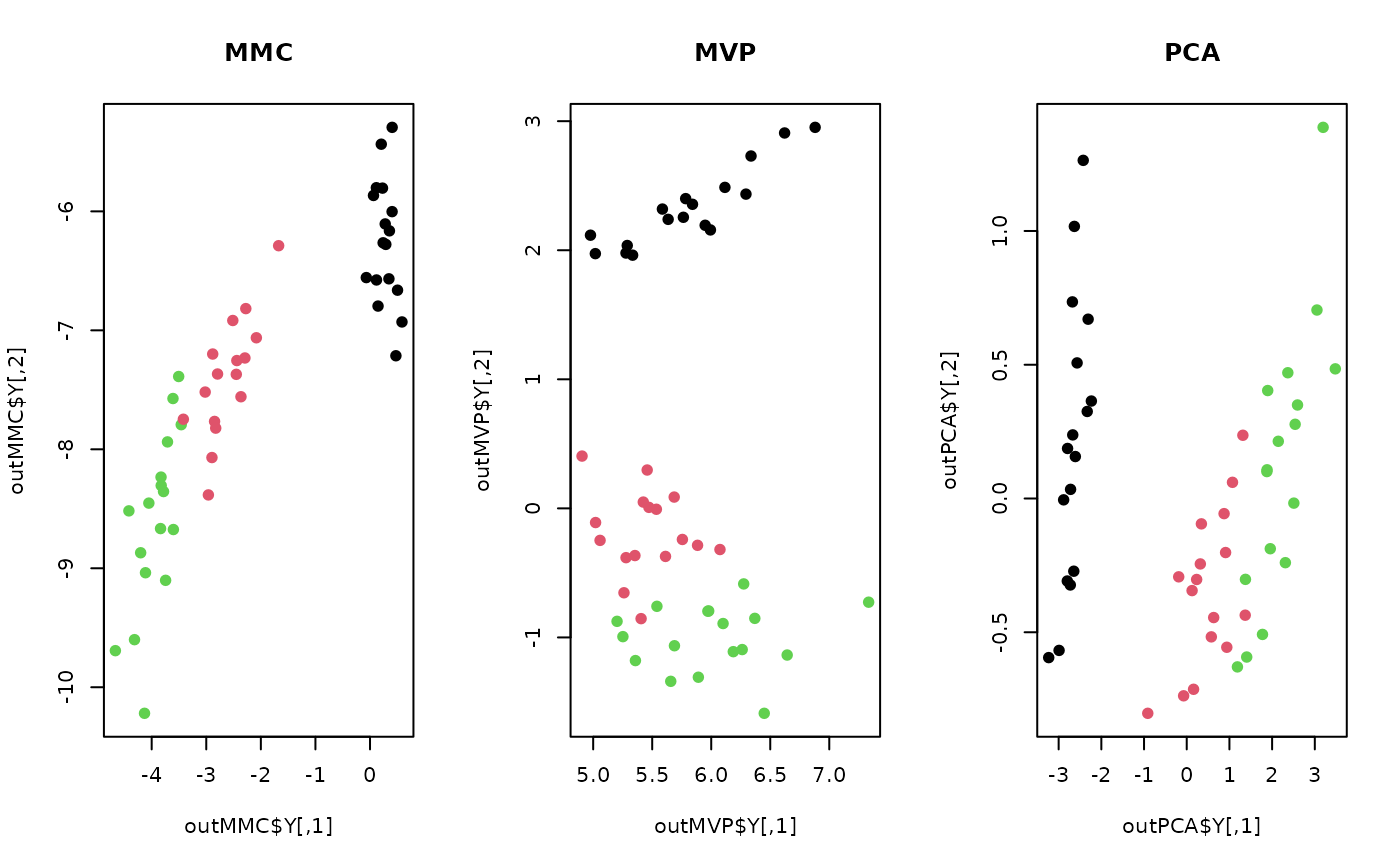Maximum Margin Criterion (MMC) is a linear supervised dimension reduction method that maximizes average margin between classes. The cost function is defined as $$trace(S_b - S_w)$$ where \(S_b\) is an overall variance of class mean vectors, and \(S_w\) refers to spread of every class. Note that Principal Component Analysis (PCA) maximizes total scatter, \(S_t = S_b + S_w\).
do.mmc(X, label, ndim = 2)Arguments
- X
an \((n\times p)\) matrix whose rows are observations and columns represent independent variables.
- label
a length-\(n\) vector of data class labels.
- ndim
an integer-valued target dimension.
Value
a named Rdimtools S3 object containing
- Y
an \((n\times ndim)\) matrix whose rows are embedded observations.
- projection
a \((p\times ndim)\) whose columns are basis for projection.
- algorithm
name of the algorithm.
References
Li H, Jiang T, Zhang K (2006). “Efficient and Robust Feature Extraction by Maximum Margin Criterion.” IEEE Transactions on Neural Networks, 17(1), 157--165.
Examples
# \donttest{
## use iris data
data(iris, package="Rdimtools")
subid = sample(1:150, 50)
X = as.matrix(iris[subid,1:4])
label = as.factor(iris[subid,5])
## compare MMC with other methods
outMMC = do.mmc(X, label)
outMVP = do.mvp(X, label)
outPCA = do.pca(X)
## visualize
opar <- par(no.readonly=TRUE)
par(mfrow=c(1,3))
plot(outMMC$Y, pch=19, col=label, main="MMC")
plot(outMVP$Y, pch=19, col=label, main="MVP")
plot(outPCA$Y, pch=19, col=label, main="PCA")
 par(opar)
# }
par(opar)
# }